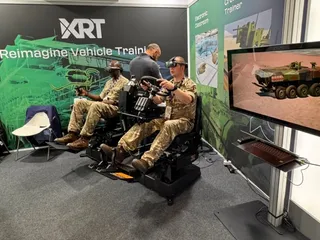New MRI Device Could Enhance Medical Diagnostics and Increase Safety
Contact Our Team
For more information about how Halldale can add value to your marketing and promotional campaigns or to discuss event exhibitor and sponsorship opportunities, contact our team to find out more
The Americas -
holly.foster@halldale.com
Rest of World -
jeremy@halldale.com
Purdue University is working on a new affordable, self-learning device to be placed into existing MRI machines. This technology will allow medical professionals to better monitor their patients by performing concurrent medical imaging and recording for diagnostic purposes.
Ranajay Mandal and Nishant Babaria, graduate research assistants in Purdue's College of Engineering, developed this technology. They developed this technology under the supervision of Zhongming Liu, an assistant professor in the Weldon School of Biomedical Engineering and the School of Electrical and Computer Engineering.
The researchers recently presented their findings at the International Society for Magnetic Resonance in Medicine conference in Honolulu, Hawaii. Their article, "Multimodal Imaging: MR-Compatible, Gradient Artifact free, Wireless recording system integrated with MR-scanner for Simultaneous EEG and fMRI acquisition," received an ISMRM magna cum laude merit award for highly-rated scientific merits.
Babaria says that “when a patient is receiving an MRI scan, it is very difficult to also monitor brainwaves, ECG, or other biological signals. MRI alone does not always provide enough information to clinicians. There is tremendous scientific and clinical value in using multiple technologies together on a single platform."
The technology they developed would be able to work simultaneously with any MRI system to record electro-physiological signals during MRI scanning. The device will work to learn when to start and stop recording an image to capture useful signals during an MRI.
The device has many feature according to researchers:
- Wireless: The device is directly powered by the MRI
- Affordable: The device cheaper than most commercial systems
- Quality: The device provides better quality in neural recording and stimulation during MRI imaging
- Potential: The device has the potential to significantly improve the safety and precision of medical diagnostics for patients who suffer from many different diseases (ex. Parkinson’s disease)
The Purdue Research Foundation Office of Technology Commercialization has patented this technology.
After the conference, Mandal and Babaria said they received several requests from about a dozen universities for this device. They are eager to move forward with finalizing this device to get it into as many hands as possible.


